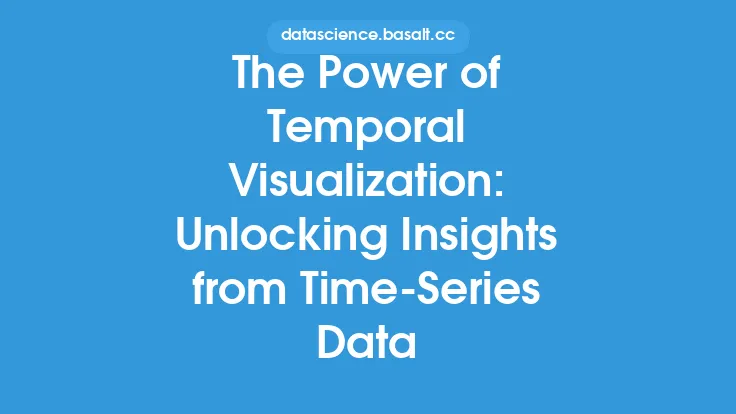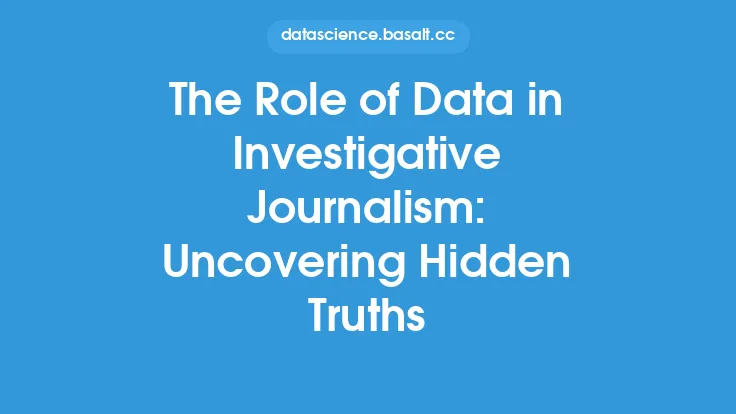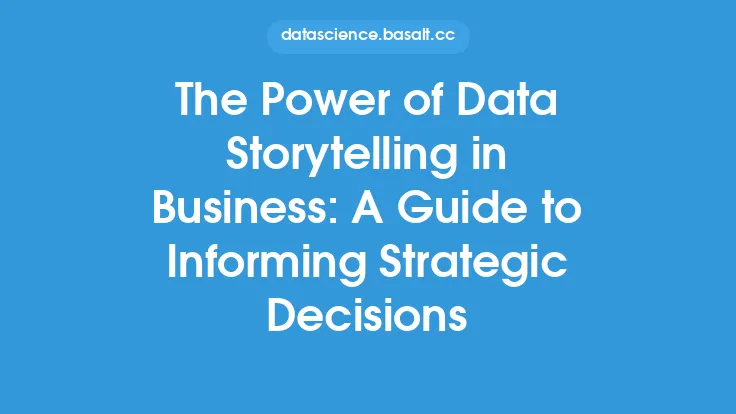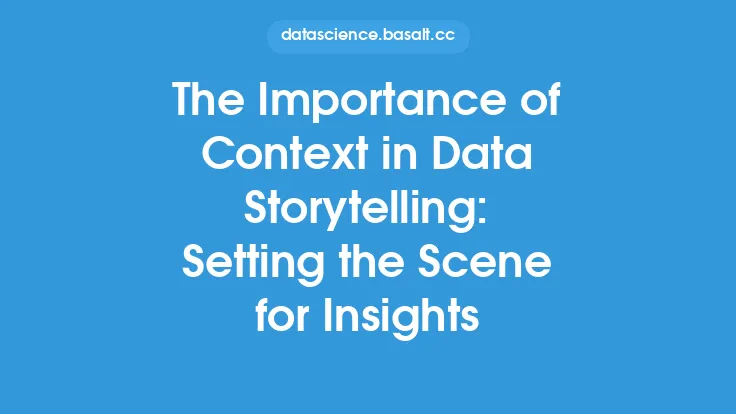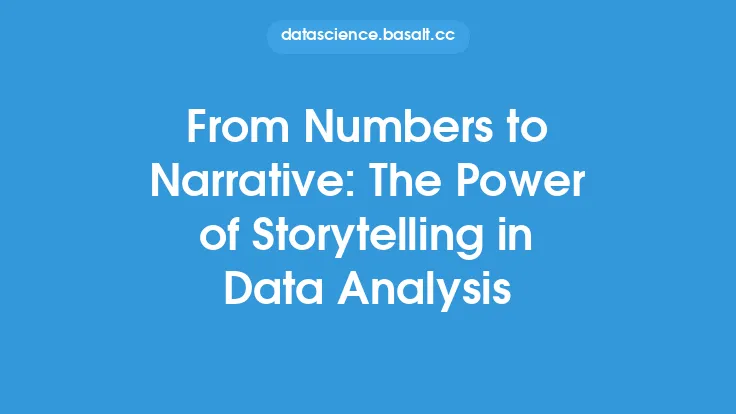The advent of data journalism has revolutionized the way stories are told and consumed. By leveraging data and statistical analysis, journalists can uncover hidden patterns, trends, and insights that would be impossible to detect through traditional reporting methods. This approach to storytelling has become increasingly important in today's digital age, where the sheer volume of data available can be overwhelming. Data journalism provides a powerful tool for making sense of this data, and for using it to tell compelling and informative stories.
Introduction to Data Journalism
Data journalism is a specialized form of journalism that involves using data and statistical analysis to tell stories. It combines traditional journalistic techniques with advanced data analysis and visualization methods to uncover insights and trends that might not be apparent through other forms of reporting. Data journalists use a range of tools and techniques, including data mining, statistical modeling, and data visualization, to extract insights from large datasets and to communicate these insights to their audiences.
The Process of Data Journalism
The process of data journalism typically involves several key steps. The first step is to identify a story or topic that can be explored through data analysis. This might involve reviewing existing research, conducting interviews with experts, or using data to identify areas of interest. Once a topic has been identified, the next step is to collect and clean the relevant data. This can involve obtaining data from government agencies, companies, or other sources, and then using statistical software to clean and preprocess the data.
Data Analysis and Visualization
Once the data has been collected and cleaned, the next step is to analyze it using statistical software. This can involve using techniques such as regression analysis, clustering, and machine learning to identify patterns and trends in the data. Data journalists also use data visualization tools to communicate their findings to their audiences. Data visualization involves using graphical representations of data, such as charts, graphs, and maps, to illustrate key trends and insights. By using data visualization, journalists can make complex data more accessible and engaging for their audiences.
Tools and Techniques of Data Journalism
Data journalists use a range of tools and techniques to analyze and visualize data. Some common tools include spreadsheet software such as Microsoft Excel or Google Sheets, statistical software such as R or Python, and data visualization tools such as Tableau or D3.js. Data journalists also use programming languages such as Python or R to extract insights from large datasets and to automate repetitive tasks. Additionally, data journalists use data scraping tools to extract data from websites, and data cleaning tools to preprocess and clean the data.
Best Practices for Data Journalism
To ensure the accuracy and reliability of their stories, data journalists follow several best practices. These include verifying the accuracy of their data, using transparent and reproducible methods, and avoiding bias and misinformation. Data journalists also use peer review and fact-checking to ensure the quality of their work, and they are transparent about their methods and data sources. By following these best practices, data journalists can build trust with their audiences and ensure that their stories are accurate and reliable.
The Impact of Data Journalism
Data journalism has had a significant impact on the way stories are told and consumed. By using data and statistical analysis, journalists can uncover hidden patterns and trends that would be impossible to detect through traditional reporting methods. Data journalism has also enabled journalists to hold power to account, by using data to investigate and expose wrongdoing. Additionally, data journalism has provided new opportunities for engagement and interaction, by allowing audiences to explore and interact with data in new and innovative ways.
The Future of Data Journalism
The future of data journalism is exciting and rapidly evolving. As new tools and technologies become available, data journalists will be able to analyze and visualize data in new and innovative ways. The increasing availability of large datasets and the development of new machine learning and artificial intelligence techniques will also enable data journalists to uncover new insights and trends. Additionally, the growing demand for data-driven storytelling will drive the development of new data journalism tools and techniques, and will provide new opportunities for data journalists to tell compelling and informative stories.
Challenges and Limitations of Data Journalism
Despite its many benefits, data journalism also faces several challenges and limitations. One of the main challenges is the need for specialized skills and training, as data journalism requires a combination of journalistic and technical expertise. Additionally, data journalism can be time-consuming and resource-intensive, as it requires significant amounts of time and effort to collect, clean, and analyze data. Furthermore, data journalism can also be limited by the availability and quality of data, as well as by the need to ensure the accuracy and reliability of data-driven stories.
Conclusion
In conclusion, data journalism is a powerful tool for storytelling that has revolutionized the way stories are told and consumed. By leveraging data and statistical analysis, journalists can uncover hidden patterns and trends, and tell compelling and informative stories. While data journalism faces several challenges and limitations, its benefits and opportunities make it an exciting and rapidly evolving field. As new tools and technologies become available, data journalists will be able to analyze and visualize data in new and innovative ways, and will provide new opportunities for engagement and interaction.
